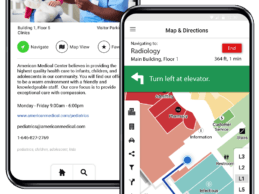Clinics and other healthcare businesses often invest heavily in PR but overlook the impact of visual design on patient perception and trust. A well-crafted visual identity means more than having a cool logo. It also encompasses website design, printed materials, social media images, and even staff uniforms. When these elements are aligned, they create a cohesive experience that people remember and recommend.
If you run a small clinic, you might think you don't have the budget to level
Read More
healthcare design
Health Tech UX – Why We Must Keep Physicians Top-of-Mind
The shortage of physicians in America is a growing concern, with serious consequences for our nation’s hospitals. The Association of American Medical Colleges (AAMC) estimates a shortage of between 21,000 and 77,100 non-primary care physicians by 2034, including surgical and other medical specialists. Already, 50% of hospitals are short coverage for three or more specialties, and 90% are short at least one. Half of the nation’s hospitals ended 2022 in the red, and for many Americans, getting
Read More
Why Healthcare Innovation Needs Human-Centered Principles
Millions of people around the world have lost their health as a result of the pandemic. Millions more have lost loved ones. Trillions of dollars have been spent fighting the virus and restoring life post-pandemic, while many families have lost income, savings, or both.
COVID-19 has no doubt been catastrophic, but let it also be the wake-up call we need to improve experiences for both patients and healthcare providers alike. In a new era increasingly shaped by remote care, digital tools,
Read More
9 Ways UX/UI Design Can Improve Digital Health Adoption for Seniors
Seniors have the lowest reported usage of telehealth of any age group. As many healthcare providers are increasing the use of telehealth, especially in response to the COVID-19 pandemic, the implementation of new tools and technologies could impact seniors.
In my experience, this doesn’t indicate that older adults aren’t tech-minded, or that they are not using tech products currently. In fact, studies show that seniors use smartphones at the same rate as younger groups. Over 80 percent of
Read More
Hospital Wayfinding: The Next Frontier in Healthcare Design
Healthcare facilities and their sprawling campuses can be overwhelming and challenging to navigate. In fact, facilities lose close to $800 million a year due to missed hospital appointments, and many physicians blame a significant portion of this lost revenue on the problems patients have navigating these facilities.
Figuring out where to park and finding the correct office can be stressful and negatively impact the patient’s experience. Making matters worse, most hospital staff members work
Read More
COVID-19: Why Designers Must Play A Larger Role in Healthcare’s Future
The coronavirus outbreak has brought epic casualties as more than 7.3 million cases have been confirmed globally and more than 413,000 people--and counting--are known to have died. In the United States, the COVID-19 pandemic has shown flaws in our medical system, from basic preparedness to the coordinated distribution of medical equipment. Within this global tragedy, there are stories of heroism and renewed mind power and energy addressing health care.
In reaction to shortages, we’re
Read More
COVID-19: 5 Steps for Health IT Teams to Accommodate New Demands
The rapid escalation of COVID-19 patient cases has created new challenges for healthcare organizations to scale up testing and care services, while also reducing risk for non-critical patients or care workers. Healthcare IT professionals are being asked to digitally transform overnight, in supporting remote workers, telemedicine, outdoor triage tents, and a surge in patients and connected devices. Here are five key steps for healthcare IT departments to take in order to accommodate the new
Read More
Innovative Hospital Design: A Prescription for Creativity
For the past few years, many corporations have been rethinking office spaces in an effort to inspire creativity and innovation in employees. Hospitals are joining the movement and searching for a cure for the drab, sterile interior designs that have been the norm for decades. In fact, forward-thinking hospitals are realizing that good design that improves patients’ moods can actually help people get well faster. Here are two elements of creative design that impact both healthcare professionals
Read More
The Impact of Creating Emotion in Healthcare Design
Editor’s Note: Stuart Karten is the principal of Karten Design, a product innovation consultancy creating positive experiences between people and products specializing in health technology.
Interfacing with the healthcare system is a journey fraught with emotion. Feelings like fear, embarrassment, and hope all play a role in how people perceive their experiences. During the course of designing medical and digital health products over 30 years, we’ve begun to understand the role that
Read More









